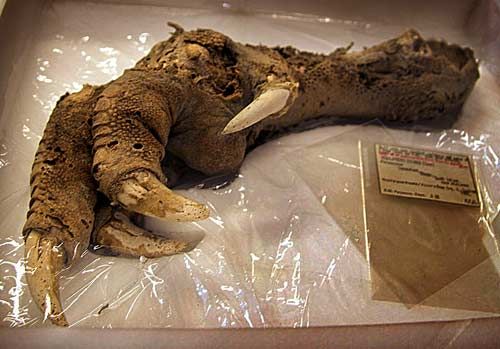Nearly three decades ago, a team of archaeologists were carrying out an expedition inside a large cave system on Mount Owen in New Zealand, when they stumbled across a frightening and unusual object.
With little visibility in the dark cave, they wondered whether their eyes were deceiving them, as they could not fathom what lay before them—an enormous, dinosaur-like claw still intact with flesh and scaly skin. The claw was so well-preserved that it appeared to have come from something that had only died recently.
The first discovery of the moa occurred in 1839 when John W. Harris, a flax trader and natural history enthusiast, was given an unusual fossilized bone by a member of an indigenous Māori tribe, who said he had found it in a river bank. The bone was sent to Sir Richard Owen, who was working for the Hunterian Museum at the Royal College of Surgeons in London. Owen was puzzled by the bone for four years—it did not fit with any other bone he had come across.
The moa has frequently been mentioned as a candidate for revival through cloning since numerous well-preserved remains exist from which DNA could be extracted. Furthermore, since it only became extinct several centuries ago, many of the plants that made up the moa’s food supply would still be in existence.

